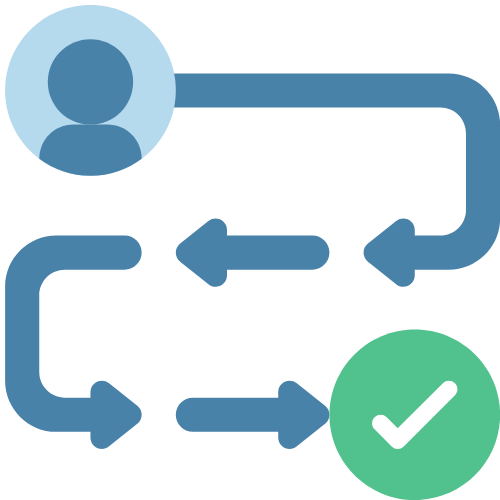As a small business owner, it’s important to understand the various touchpoints that a customer has with your brand and how they navigate through the sales funnel. This is known as the customer journey. By mapping out and optimizing the customer journey, you can improve the customer experience and ultimately drive more sales for your business.
Here are some tips for mapping out and optimizing the customer journey for small business clients using WordPress websites:
Identify the Different Stages of the Customer Journey
The first step in mapping out the customer journey is to identify the different stages that a customer goes through when interacting with your brand. These stages can include awareness, consideration, and decision.
- Awareness stage: This is when a customer becomes aware of your brand and products or services. This stage is all about creating brand awareness and getting potential customers to take notice.
- Consideration stage: This is when a customer is actively considering your products or services as a solution to their problem or need. This stage is all about providing information and building trust.
- Decision stage: This is when a customer is ready to make a purchase. This stage is all about providing a seamless and smooth purchasing experience.
Map out the Customer Journey
Now that you’ve identified the different stages of the customer journey, it’s time to map out the specific touchpoints that a customer has with your brand during each stage. Some common touchpoints include:
- Website: This is the main hub of information for your business, and it’s important to optimize the user experience for potential customers.
- Social media: Social media platforms can be powerful tools for interacting with customers and building a community around your brand.
- Email marketing: Email marketing can be a great way to stay in touch with potential customers and provide them with valuable information and offers.
- In-store or in-person interactions: Any interactions that a customer has with your business in person, such as visiting a physical store or attending an event, can also be important touchpoints in the customer journey.
Analyze Customer Behavior
Once you’ve mapped out the customer journey, it’s important to analyze the data to understand how customers are interacting with your brand at each stage. This can help you identify any bottlenecks or areas for improvement in the customer journey.
Some tools that can be helpful in analyzing customer behavior include:
- Google Analytics: This is a free tool that can help you track website traffic and understand how visitors are interacting with your site.
- Social media analytics: Most social media platforms have their own analytics tools that can help you understand how customers are interacting with your brand on those platforms.
- Email marketing analytics: Many email marketing platforms provide detailed analytics on the performance of your campaigns, including open rates, click-through rates, and conversion rates.
Optimize the Customer Journey
Now that you’ve analyzed the data and identified any bottlenecks or areas for improvement in the customer journey, it’s time to take action to optimize the experience for your customers. Here are some tips for optimizing the customer journey:
Make it easy for customers to find what they’re looking for: Customers should be able to easily find the information they need on your website, whether it’s product details, pricing, or shipping information.
- Streamline the checkout process: The checkout process should be quick and easy for customers, with as few steps as possible. Consider using a plugin like WooCommerce to make the process smooth and seamless.
- Use social media to interact with customers: Social media can be a great way to connect with customers and provide timely and helpful support. Respond to customer inquiries and complaints in a timely manner and use social media to showcase your products and services.
- Personalize the customer experience: Personalization can go a long way in improving the customer experience. Use tools like email marketing and website tracking to gather information about customers and use that information to tailor the experience to their interests and needs.
- Utilize customer feedback: Customer feedback is a valuable resource for understanding how to improve the customer journey. Make it easy for customers to leave reviews and ratings on your website and social media channels, and take their feedback into consideration when making changes to the customer journey.
Test and Measure
Once you’ve made changes to the customer journey, it’s important to test and measure the results to see how they’re impacting the customer experience. Use tools like A/B testing to compare the performance of different versions of the customer journey and make data-driven decisions about what works best.
Continuously Optimize
The customer journey is never really “finished” – it’s always evolving as your business grows and changes. It’s important to continuously monitor and analyze the customer journey and make changes as needed to improve the experience for your customers.
In conclusion, mapping out and optimizing the customer journey is a crucial part of running a successful business. By understanding the different stages of the customer journey and the touchpoints that a customer has with your brand, you can improve the customer experience and drive more sales. By utilizing tools like Google Analytics, social media analytics, and email marketing analytics, and by collecting and utilizing customer feedback, you can continuously optimize the customer journey to create a seamless and enjoyable experience for your customers.
Check out our blog page for more articles and consider subscribing to our newsletter.
